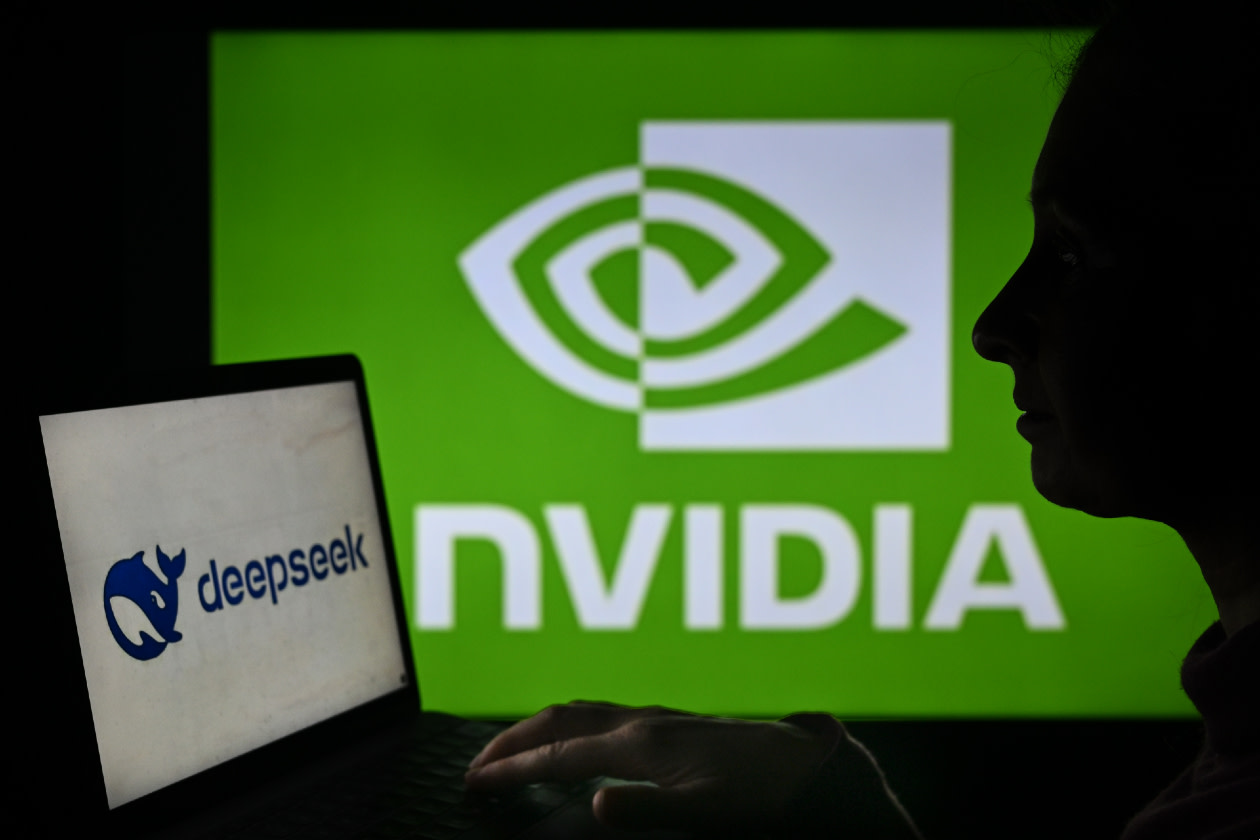NVIDIA’s first quarter revenue grew 69% to $44.1bn, despite a $2.5bn impact related to new export restrictions to China. Data Center sales were by far the biggest growth driver, up 73% to $39.1bn.
Operating income growth was much slower, up 28% to $21.6bn, as gross margins were dented by the $4.5bn ($1bn less than expected) write-down of H20 chip inventory that was destined for China.
That however had no impact on free cash flow, which rose by 75% to $26.1bn. The company had a net cash position of $45.2bn.
Nvidia returned $14.3bn to shareholders over the quarter, mainly via share buybacks.
Second quarter revenue is expected to reach around $45bn, reflecting year on year growth of around 50%, despite missing out on about $8bn of future revenue owing to export restrictions.
The shares rose 4.9% in after-hours trading.
Our view
Nvidia shares responded well to a robust first quarter earnings statement. The company’s also working hard to develop a product to replace the H20 chip that has been prohibited from being sold to China. But China’s not waiting around for a dumbed-down product. Rather, it’s rapidly pursuing its own technological development. We don’t see this as an immediate threat to demand outside of China, but it’s something we’re monitoring.
The strength in demand for AI infrastructure is broad based with major deals being signed with sovereign nations and blue-chip companies alike.
As AI adoption grows, the focus is shifting from training to putting those learnings into action (inference), which could in fact be the larger opportunity. There are some meaningful rivals emerging in the inference space, but by selling powerful complementary technology to its competitors, NVIDIA can also benefit from their success
It’s not just the powerful chips that make NVIDIA’s product so appealing, the CUDA software platform that enables users to optimise the hardware is key. It also makes networking technology over which the massive data sets required for AI can flow. It’s raising the bar on what these connections can handle, and sales of these products are accelerating. We expect that NVIDIA will continue to enjoy its dominant position over the next few years. Its technological edge affords it one of the strongest gross margins in the industry and while they can move around a little, improvements are expected later this year.
The question of return on investment is also valid. For now, NVIDIA’s biggest customers, like Meta and Microsoft, are happy to build now in anticipation of the products coming down the line. Over the next year, it’s vital that those using NVIDIA hardware to build AI products start to see the benefits.
A key but often overlooked strength of NVIDIA is its capital-light model, which - paired with strong cash flow and a solid balance sheet - supports potential for buybacks and dividends, though nothing is guaranteed. This financial strength stems partly from its outsourced manufacturing approach.
However, scaling relies on key partners. While recent production bottlenecks appear resolved, there's no certainty the supply chain can keep pace with demand. That said, the next generation of computing architecture is expected to be easier to roll out.
Investor sentiment towards NVIDIA has bounced back following the initial shock from tighter export controls. However, there’s currently no direct replacement for the lost revenue from China, meaning there’s additional pressure for other regions to deliver. That said, underlying demand and the longer-term picture still look attractive to us, though there are no guarantees.
A party related to the author owns NVIDIA shares.
Environmental, social and governance (ESG) risk
The semiconductor sector is medium-risk in terms of ESG. Overall, this risk is managed adequately in Europe and North America but has considerable room for improvement in the Asia-Pacific region. Its reliance on highly-specialised workers means labour relations is one of the key risk drivers. Other risks worth monitoring include resource use, business ethics, product governance, and carbon emissions.
According to Sustainalytics, Nvidia’s management of material ESG risks is strong.
As the market leader in power- hungry GPU processors it’s recognised for paying close attention to the energy efficiency of it products. Business ethics concerns are addressed by Nvidia’s compliance committee, which comprises the CFO and several other senior managers. Additionally, a third-party hotline is available for both employees and third-party stakeholders to anonymously submit ethical concerns. Its human capital initiatives are also strong, which is reassuring given the talent gap in the industry. However, diversity amongst the workforce could still be improved.
NVIDIA key facts
All ratios are sourced from LSEG Datastream, based on previous day’s closing values. Please remember yields are variable and not a reliable indicator of future income. Keep in mind key figures shouldn’t be looked at on their own – it’s important to understand the big picture.
This article is not advice or a recommendation to buy, sell or hold any investment.No view is given on the present or future value or price of any investment, and investors should form their own view on any proposed investment.This article has not been prepared in accordance with legal requirements designed to promote the independence of investment research and is considered a marketing communication.Non - independent research is not subject to FCA rules prohibiting dealing ahead of research, however HL has put controls in place(including dealing restrictions, physical and information barriers) to manage potential conflicts of interest presented by such dealing.Please see our full non - independent research disclosure for more information.


